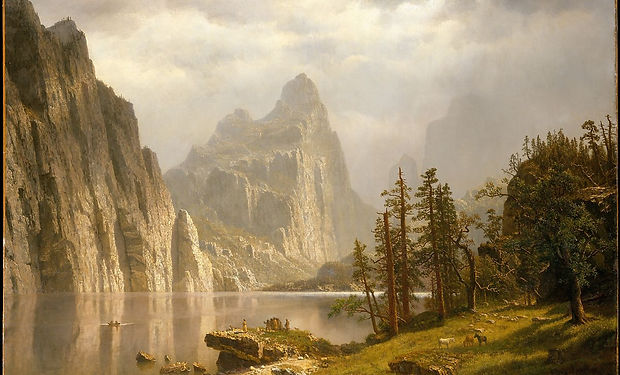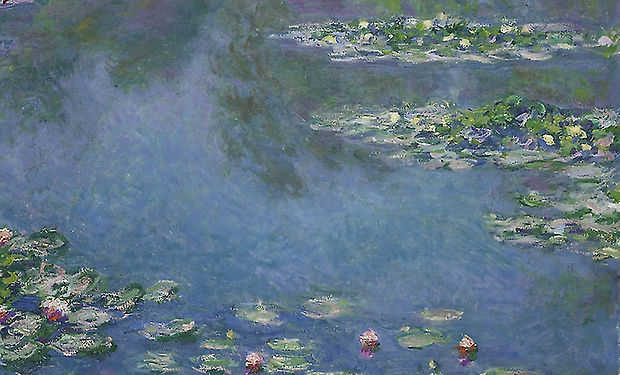Matthew J. Palczynski, Ph.D.
Art History Lecturer
ART & INNOVATION
There are new realities in business today. Luckily, they can be unpacked though art. First question: Why? Easy. Temples to art house the victors: those that underpinned their competitors; those that held more brand agency and twitter followers; those that swam faster, and won coveted spots in our shared histories. In a word, the innovators. Businesses that don't innovate become stagnant before the inevitable slow crawl. Leaders that give innovators fields to plough win. Second question: Are we all artists when we create? Yes. Time for a boot-camp to get us thinking creatively, to dare to explore the avant-garde parameters of our systems.
Global CEO Program: A Transformational Journey, The Avery Institute of Executive Education, The Wharton School, University of Pennsylvania; Philadelphia Museum of Art, Philadelphia, PA
November 2020 (canceled due to Covid-19)
PICASSO
“When I was a child, my mother said to me, ‘If you become a soldier, you’ll become a general. If you become a monk, you’ll end up as the Pope.’ Instead, I became a painter and wound us as Picasso.” This four-part lecture series examines key highlights from Picasso’s long career, from his precocious early portraits to his final depictions of a legend preoccupied with his own mortality and posthumous legacy. With nearly 50,000 works to his credit, Picasso indeed became Picasso.
The Barnes Foundation
October 2020
Photo of Pablo Picasso
FOUR ART CAPITALS
Traveling lecture program highlighting four art capitals (St. Petersburg, Paris, London, and New York), in addition to lecture series aboard the QM2.
On-site lectures "The Russian Avant Garde” and “Modernist Masterworks at the Hermitage,” St. Petersburg; “Never Turning Back: Origins of Parisian Modernism” and “Modern Master: Pablo Picasso,” Paris; “British Modernism,” London. Gallery presentations at The Metropolitan Museum, Museum of Modern Art, Whitney Museum of American Art, New York. Five-part lecture series Art Afloat 3 (“Origins of American Modernism: The Armory Show and 291 Gallery,” “Skyscraper City: Ashcan and Precisionism,” “Ups and Downs: Harlem Renaissance and American Depression-Era Art,” “The Midas Touch: Art and Consumerism,” and “Who are We? Global Contemporary Art”) aboard the RMS Queen Mary 2. Guided gallery conversations at Erarta Museum of Contemporary Art, State Hermitage Museum, St. Petersburg; Musée d'Orsay, Centre Pompidou, Louvre, Paris; Tate Britain/Modern, National Gallery, Courtauld Gallery, London.
Road Scholar
September/October 2020 (Canceled due to Covid-19)
ART ON THE QM2 LONDON-NYC
Traveling lecture program for Road Scholar tracing the major developments in Modern and Contemporary Art after 1863. Six-part lecture series Art Afloat (“Looking Ahead: Forming Modernism in Late 19th Century France,” “Masters Arrive: Picasso and Matisse," "Visualizing Essences: Abstraction Arrives," "Crossing the Pond: The New York School Triumphs," "Consumer Culture Sets In: The Beat Generation and Pop," "Major Developments After 1970") aboard the RMS Queen Mary 2.
Gallery presentations at The Metropolitan Museum of Art, Solomon R. Guggenheim Museum, New York, Whitney Museum of American Art, Museum of Modern Art, New York.
Guided gallery conversations at Tate Britain/Modern, National Portrait Gallery, National Gallery, Royal Academy of Arts, Courtauld Gallery, Victoria and Albert Museum.
New York, London, and on the iconic transatlantic crossing of the QM2.
Road Scholar
September 2020 (Canceled due to Covid-19)
DUCHAMP and DADA
Few artists or groups of artists have altered the course of art to the extent that Marcel Duchamp and his Dada contemporaries did. Championing “anti-art” as a move away from “retinal art,” the Dadaists refused to play by the same rules – and with the same materials – as the painters and sculptors around them. This four-part lecture series examines how Duchamp and the Dadaists questioned the very nature of art and learned to function in a modern world sandwiched between two world wars.
The Barnes Foundation
September 2020
Martin Lazarus/Association Marcel Duchamp/ADAGP, Duchamp in 1961 with readymades Fountain and Bicycle Wheel.
VAN GOGH
Two part series celebrating the life and work of Vincent Van Gogh. Part 1: QUINTESSENTIAL VAN GOGH surveys Van Gogh’s most celebrated works, set within the context of Impressionism and its offspring, the budding Post-Impressionism. Learn why Van Gogh’s color is always about setting the mood. Part 2: READING VAN GOGH’S LETTERS delves deeper into his work as we read and unpack some of the highlights from the collection of 903 letters written and received by Van Gogh, including the correspondence with Paul Gauguin.
Road Scholar
September 2020
Vinent van Gogh, The Starry Night, 1889, Museum of Modern Art, New York
WHAT IS ABSTRACT PAINTING?
If you’ve ever felt lost when facing an abstract painting, you are not alone. Join us to unlock some of the mysteries of the most celebrated works of abstraction.
Road Scholar
August 2020
Kazimir Malevich, Suprematist Composition: White on White, 1918, Museum of Modern Art
ART ON THE QM2 LONDON-NYC
Traveling lecture program for Road Scholar tracing the major developments in Modern and Contemporary Art after 1863. Six-part lecture series Art Afloat (“Looking Ahead: Forming Modernism in Late 19th Century France,” “Masters Arrive: Picasso and Matisse," "Visualizing Essences: Abstraction Arrives," "Crossing the Pond: The New York School Triumphs," "Consumer Culture Sets In: The Beat Generation and Pop," "Major Developments After 1970") aboard the RMS Queen Mary 2.
Gallery presentations at The Metropolitan Museum of Art, Solomon R. Guggenheim Museum, New York, Whitney Museum of American Art, Museum of Modern Art, New York.
Guided gallery conversations at Tate Britain/Modern, National Portrait Gallery, National Gallery, Royal Academy of Arts, Courtauld Gallery, Victoria and Albert Museum.
New York, London, and on the iconic transatlantic crossing of the QM2.
Road Scholar
July 2020 (Canceled due to Covid-19)
LECTURING IN AN ONLINE WORLD
Conversation with Susan Dackerman, John & Jill Freidenrich Director of the Cantor Arts Center, about the shift from in-person to online lecturing.
Cantor Arts Center, Stanford University
July 2020
Deborah Kass, OY/YO installed at Cantor Arts Center (Stanford), Palo Alto
GARDEN of EARTHLY DELIGHTS: ART and NATURE
These talks explore various dimensions of how we might define “nature” in art. Our definition will include nature as a subject (such as Leonardo’s rocks and Bierstadt’s soaring vistas), the iconography of nature (Caravaggio’s luscious fruits), abstractions of nature (Brancusi’s birds), nature as an ingredient (the earth in Smithson’s jetty and Ofili’s elephant dung), nature as a concept (Viola’s ocean), and more.
The Barnes Foundation
July 2020
Albert Bierstadt, Merced River, Yosemite Valley, 1866, The Metropolitan Museum of Art, New York
3D/4D: SCULPTURE 1850 to the PRESENT
Four-part lecture series celebrating the various modes of modern and contemporary sculpture, from 3D to 4D and beyond. What made Rodin’s work so different? How did Brancusi link carving and essence? How did Duchamp force a reexamination of what art is? Are Happenings sculpture? Explore the paradigms of insider/outsider art. Interrogate the intersections between traditional “3D” sculpture and contemporary performance, video, and conceptual pieces.
The Barnes Foundation
June 2020
IMPRESSIONISM and JAPONISME
Four-part lecture series highlighting the paradigmatic influence of Japanese art on Impressionism. In the 1850s, trade between France and Japan resumed for the first time in nearly 250 years. The resulting syncretic impact of Japanese art and design on Impressionist art was extraordinary. Investigate how Monet, Whistler, Van Gogh, and others incorporated Japanese themes and imagery into their respective work.
The Barnes Foundation
May 2020
Claude Monet, Water Lilies, 1906, Art Institute of Chicago
ART ON THE QM2 LONDON-NYC
Traveling lecture program for Road Scholar tracing the major developments in Modern and Contemporary Art after 1863. Six-part lecture series Art Afloat (“Looking Ahead: Forming Modernism in Late 19th Century France,” “Masters Arrive: Picasso and Matisse," "Visualizing Essences: Abstraction Arrives," "Crossing the Pond: The New York School Triumphs," "Consumer Culture Sets In: The Beat Generation and Pop," "Major Developments After 1970") aboard the RMS Queen Mary 2.
Gallery presentations at The Metropolitan Museum of Art, Solomon R. Guggenheim Museum, New York, Whitney Museum of American Art, Museum of Modern Art, New York.
Guided gallery conversations at Tate Britain/Modern, National Portrait Gallery, National Gallery, Royal Academy of Arts, Courtauld Gallery, Victoria and Albert Museum.
New York, London, and on the iconic transatlantic crossing of the QM2.
Road Scholar
May 2020 (Canceled due to Covid-19)
PICASSO'S MASTERWORKS, 1 and 2
Two-part lecture series highlighting only some of Picasso's masterworks. More than a century after Cubism, we are still unpacking his extraordinary career. As the most celebrated artist of his generation, Picasso continued to produce complex masterworks into his nineties. His contribution to the history of art was immeasurable.
Road Scholar
May 2020
Photo of Pablo Picasso
ON THE RUN: EUROPEAN ARTISTS and INTELLECTUALS FLEE WW2
Four-part lecture series exploring the many important European artists exiled during and just before WW2. What does it mean to leave your homeland unexpectedly, during unknown circumstances? How does being exiled impact arts and ideas? Examine key artists and intellectuals who fled Europe during the Second World War. Delve into the zeitgeist and trace the impact of the war on artists, especially those in Germany, Austria, and France. Discover what the exiled Europeans transmitted to their younger contemporaries in the US and conversely, unpack the work of the Europeans who stayed behind, all in a shifting superpowers of ideas.
The Barnes Foundation
April 2020
Paul Klee, Ad Parnassum, 1932, Kunstmuseum Bern, Switzerland
WORLD ACADEMY: SOUTH PACIFIC
Fourteen-part lecture series aboard MS Amsterdam: “Sailors’ Delight: Art and the Ocean,” “Cross-Cultural Currents: Parallel Aesthetics in Oceanic and Modern Art,” “Western Dialogues in Pacific Art Today,” “Is “Exotic” Ok? Picasso’s Primitivising Impulses,” “Gauguin’s Tahitian Paradise,” “Beyond Exotic Masks/Nudes: The Harlem Renaissance,” “Chasing Sunsets: Art, Nature, Sublime,” “Away from Shore: Pollock, Jung, and Transcending Cultural Divides,” “I’ll Follow the Sun: Art and Light,” “The Cost of Being Here: Warhol and Commoditizing Identities,” “Impressionism and Japonisme,” “Tourist Trade: Art, Globalism, and Geo-Politics,” “American Modernism,” “Headed Toward Africa: Art and the African Diaspora”).
San Antonio, Chile; Easter Island; Pitcairn; Papeete, French Polynesia; Rarotonga, Cook Islands; Nuku Alofa, Tonga; Auckland, New Zealand
Road Scholar
March 2020
Detail, Easter Island
ART AND LEADERSHIP IN SEATTLE
Three straightforward questions. Does art help us learn better? Does participating in the process of experiencing art in a more interactive way help us to get more out of it? Do discoveries with art help us outside the museum, even at work? All data points point to a resounding yes, to all three. Ignoring these realities leaves too much on the table. It’s time to keep pace with an ever-changing world and workplace and come to terms with how to balance top-down with participatory methods. Art tackles these issues head-on and shows us how to become proficient in new ways of thinking better suited to these changing winds. It helps raise awareness and engage cultural change, necessary goals for everyone in the org chart, not just for designated leaders. Time to learn how.
Seattle Art Museum, Seattle, WA; Global Corporate Learning & Talent Summit, Leadership, Development & Organizational Development Council, Hosted by Microsoft, Bellevue, WA
February 2020
ART AND LEADERSHIP IN NYC
Discussion exploring intersections between art and leadership. What can ancient Greek sculptures teach us about our organizational models at work, today? What does Monet say to us about perception, projection, and how not to get trapped in reading data through our own lenses? And, sit on the Met's floor for the first time. Or, do it again. You probably haven't for awhile.
Leadership Development Council, Hosted by The Conference Board at The Metropolitan Museum of Art, New York, NY
January 2020














